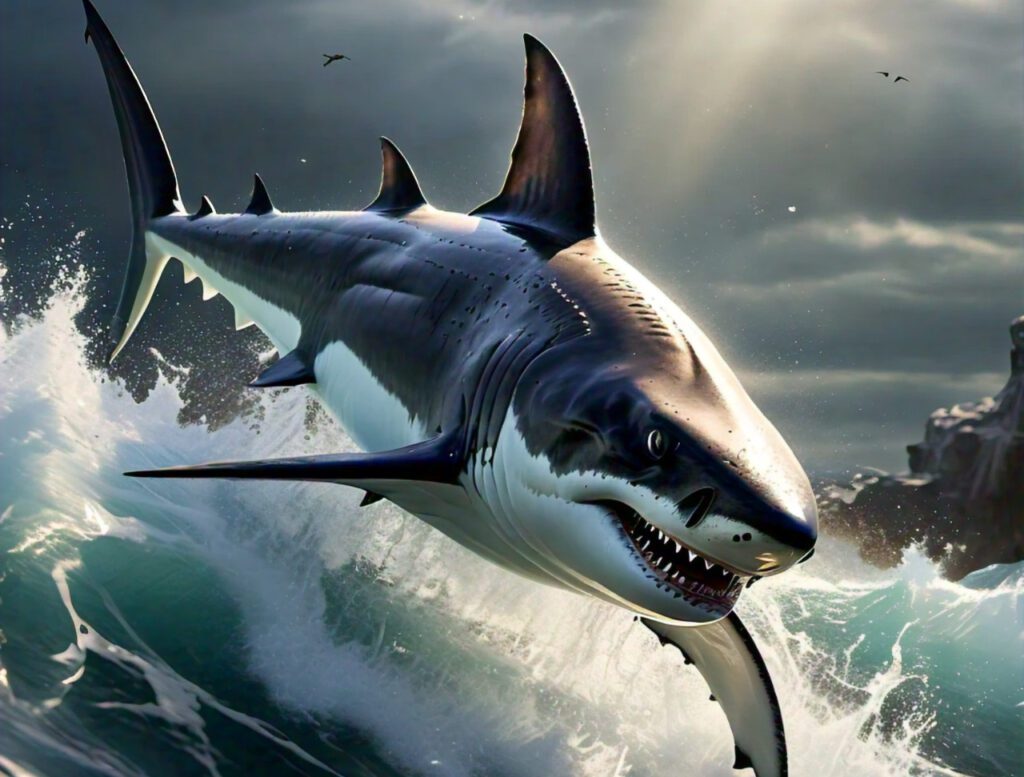Great white sharks are one of the most feared and fascinating creatures in the ocean. They have powerful bodies, sharp teeth, and a reputation for being dangerous. But what would actually happen if someone tried to ride one? Would it be like riding a horse, or are there hidden dangers we don’t often think about?
In this article, we’ll explore this question in detail, using simple words so that even a 5th grader can understand. We’ll also provide key takeaways and helpful information to satisfy your curiosity.
Key Takeaways
- Great white sharks are dangerous predators.
- Riding a great white shark is extremely risky and not advisable.
- Understanding the behavior and biology of great white sharks can help us respect these creatures.
- There are ethical and conservation issues to consider.
Understanding Great White Sharks
Physical Characteristics
Great white sharks are large, powerful fish. They can grow up to 20 feet long and weigh up to 5,000 pounds. Their bodies are streamlined for swimming fast, and they have several rows of sharp teeth that they use to catch prey.
“A great white shark’s powerful body and sharp teeth make it a formidable predator.”
Habitat and Behavior
Great white sharks are found in oceans all over the world. They prefer cooler waters and often stay near the surface, but they can dive deep when hunting. These sharks are known for their solitary behavior, although they may gather in areas with abundant food.
Diet
Great white sharks are carnivores. Their diet includes fish, seals, sea lions, and even smaller whales. They are apex predators, meaning they are at the top of the food chain and have no natural enemies.
“Great white sharks’ diet consists of various marine animals, showcasing their role as apex predators.”

The Risks of Riding a Great White Shark
Physical Dangers
Riding a great white shark is extremely dangerous. These sharks are not domesticated animals like horses or dogs. They are wild predators with powerful jaws and sharp teeth. If a shark feels threatened, it may attack.
“Attempting to ride a great white shark puts you at significant risk of being bitten or injured.”
Behavioral Risks
Great white sharks are not used to human interaction in the way that domesticated animals are. They can become agitated or stressed if a human tries to ride them, which increases the risk of an attack.
Ethical and Conservation Issues
Besides the physical dangers, there are ethical considerations. Great white sharks are vulnerable species. Harassing or trying to ride them can cause stress and harm. It’s important to respect wildlife and not interfere with their natural behavior.
“Respecting wildlife and avoiding interference is crucial for the conservation of vulnerable species like the great white shark.”
The Consequences of Riding a Great White Shark
Injury to the Rider
If you tried to ride a great white shark, you would likely be injured. The shark could bite or thrash around, causing severe harm. Even if you managed to avoid being bitten, the rough skin of the shark could cause cuts and abrasions.
“The rough skin of a great white shark can cause injuries even if the shark does not bite.”
Stress to the Shark
Trying to ride a great white shark would also cause stress to the animal. Sharks are not accustomed to carrying humans and may become frightened or aggressive. This stress can affect their health and behavior.
Legal Consequences
In many places, there are laws protecting great white sharks and other marine animals. Trying to ride a shark could result in legal penalties, including fines or imprisonment.
“Legal protections for marine animals make it illegal to harass or harm species like the great white shark.”
Ethical Considerations
Respect for Wildlife
One of the most important reasons not to ride a great white shark is respect for wildlife. These animals play a crucial role in the marine ecosystem, and it’s important to observe them without interfering.
“Respecting wildlife means observing from a distance and not interfering with their natural behaviors.”
Conservation Efforts
Great white sharks are vulnerable species, and their populations are declining due to overfishing and habitat loss. Conservation efforts focus on protecting these animals and their habitats. By respecting great white sharks, we contribute to their conservation.
Conclusion
In conclusion, trying to ride a great white shark is a dangerous and ill-advised idea. These powerful predators are not meant to be ridden, and attempting to do so could result in serious injury or even death. Moreover, it’s important to respect and protect these incredible creatures. Great white sharks play a vital role in the ocean ecosystem, and it’s our responsibility to ensure their survival for future generations.
